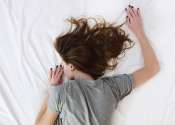High levels of rare gut bacteria may be linked to restless legs syndrome
Small intestine bacterial overgrowth (SIBO) may be more prevalent among patients with restless legs syndrome (RLS), according to preliminary findings from a small, new study.
Jun 7, 2019
1
3942







